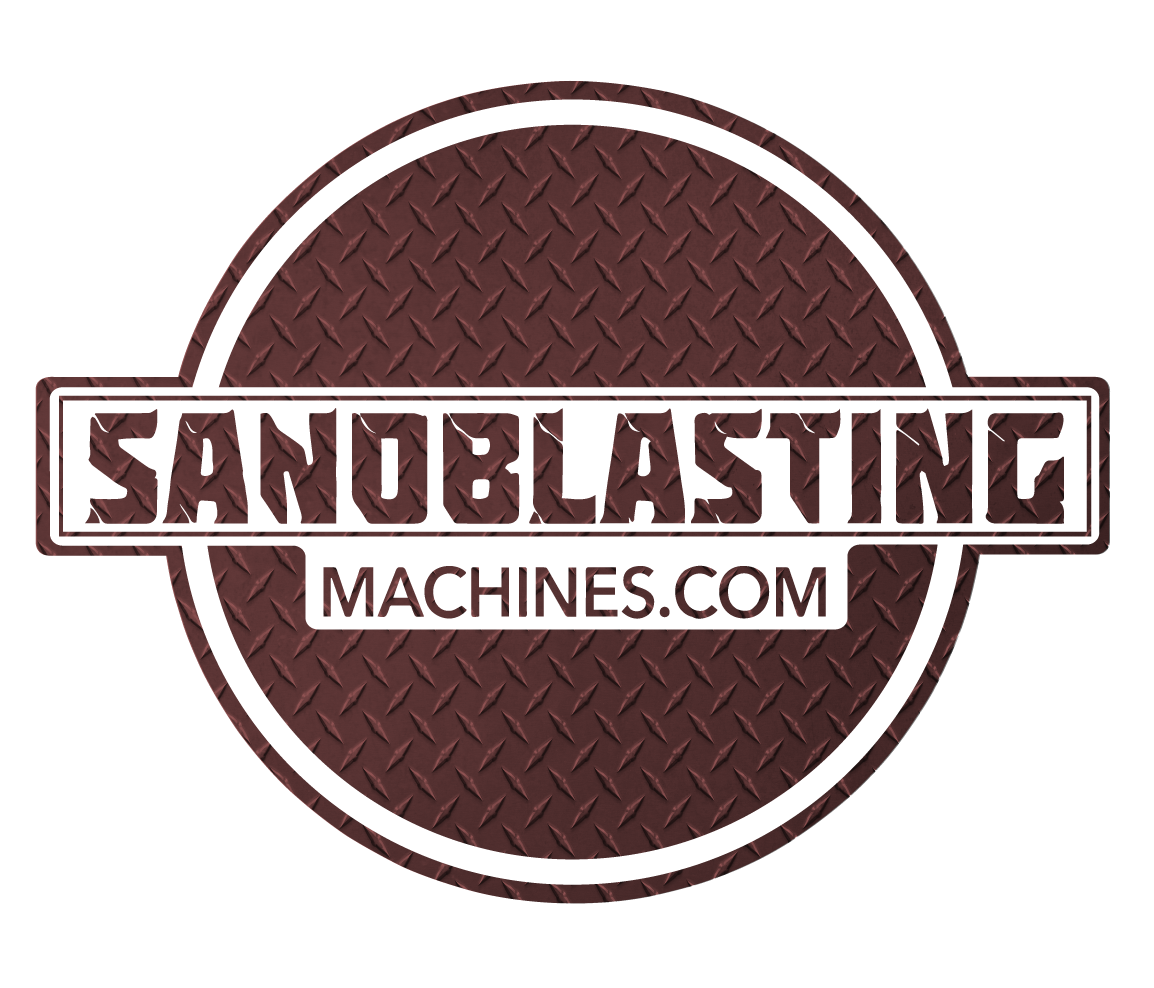Blast Safely During the COVID-19 Pandemic
By on Mar 31st 2020

Blast Safely During the COVID-19 Pandemic
Clemco’s Director of Product Safety Explains How
By Thomas Enger
|
What I Hope You Already KnowBy now I hope everyone has seen the World Health Organization’s Do the Five recommendations for stopping the spread of the coronavirus: |
|
|
|
|
|
|
Wash Hands Often Cough Into Elbow Don't touch your Face Keep Safe Distance Stay Home if you Can
Of course, if you are ill, stay home.
But if you are healthy, you obviously can’t blast from home.
So when at the worksite, follow the additional precautions discussed on this web page—for the safety of you and others.
Extra Precautions When Using Blast Cabinets
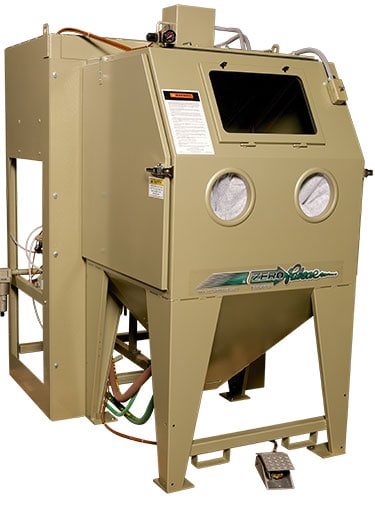
1. If you touch it, clean it!
- If you remember anything from this article, it’s:If you touch it, clean(and disinfect)it.
- In order to kill those invisible viruses, clean with a disinfectant such as an antiviral cleaner, a solution that is 2% bleach, or other Centers for Disease Control and Prevention (CDC) recommended disinfectants. Even if a surface you touched looks clean—clean it!
- Clean all parts of a blast cabinet your hands, body, or clothing may have touched. Yes, your clothing. The coronavirus could be there and then transfer onto a surface your clothing rubs against.
- Clean surfaces in the work area you may have touched.
- A handheld spray bottle may speed up cleaning.
2. Cleaning and disinfecting specifically for after using a blast cabinet.
After using a blast cabinet, clean and disinfect:
- Switches
- Latches
- Regulators
- Wing nuts
- View window exterior (You, and probably others, have breathed on it.)
- Any other part of the cabinet you may have touched.
- Any blast cabinet surface you may have leaned against with bare skin or clothing.
- Any other surfaces you may have touched.
3. Blast gloves
- As best you can, clean and disinfect the interior of your rubber blast gloves and dry them.
- If other operators use the machine, all should have their own set of quick-change gloves.
- Don’t share gloves! For more information on quick change gloves, contact customer service and ask about Stock No. 28820

4. Dry surfaces you cleaned with disposable rags.
Drying equipment with disposable rags is important because:
- The coronavirus can live longer in moist environments.
- Mold can grow in moist environments.
- Remember: Throw away rags after using them. The virus may be on them.
Extra Precautions When Using Blast Rooms
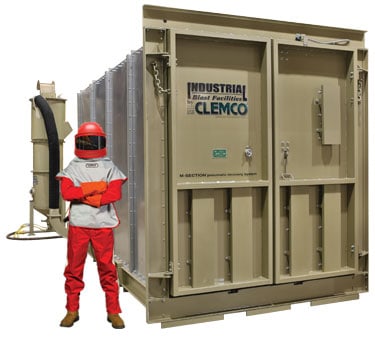
1. If you touch it, clean it!
- If you remember anything from this article, it’s:If you touch it, clean(and disinfect) it.
- In order to kill those invisible viruses, clean with a disinfectant such as an antiviral cleaner, a solution that is 2% bleach, or other Centers for Disease Control and Prevention (CDC) recommended disinfectants. Even if a surface you touched looks clean—clean it!
- Clean all parts of a blast room your hands, body, blast suit, or gloves may have touched. Yes, your blast suit and gloves. The coronavirus could be there and then transfer onto a surface you touched.
- Clean surfaces in the work area you may have touched.
- A handheld orchard sprayer or a basic spray bottle may speed up cleaning.
2. Cleaning and disinfecting specifically for after using a blast room.
After using a blast room, clean and disinfect:
- Door handles
- View windows
- Brooms
- Shovels
- Any other tools in or parts of the blast room you may have touched.
- Any blast room surface you may have leaned against.
- Any part of the blast machine you may have touched, such as:
- Hose
- Remote controls
- Abrasive metering valve
- Isolation valves
- Bags of abrasive that you touched and have not discarded. (Keep moisture from entering the bags.)
- Any other surfaces you may have touched.
3. Blast Suits and Gloves
- Clean and disinfect the exterior of your blast suit and gloves.
- As best you can, clean and disinfect the interior of your blast suit and gloves and dry them. Air drying may be the easiest.
- Don’t share blast suits and gloves!
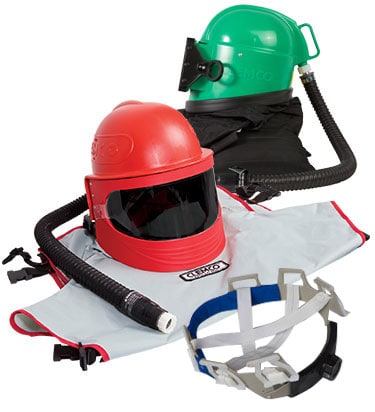
4. Respirators
- Every part of a respirator is exposed to a blaster operator’s exhalations, coughs, and sneezes.So never share respirators!
- After the end of each shift, blast operators should clean and disinfect their respirators and all respirator components.
- Operators can clean and disinfect their respirators and respirator components either by hand washing or submersion.
- With either method, use a 2% bleach solution or another CDC recommended disinfectant.
Hand Washing a Respirator and Its Components
-
-
- After using a respirator, break it down into its individual parts, including the suspension system, in-helmet-mounted carbon monoxide monitor if you use one, inner lenses, rubber gaskets, cushions, the cape collar, blast shroud, and other components in or attached to the helmet.
- Next, hand wash the blast helmet and its components with a 2% bleach solution or another CDC recommended disinfectant.
- Allow the helmet and components to air dry.
-
Clean by Submerging a Respirator and Its Components
A Timesaver—Instead of individually hand washing a blast helmet and its components, submerge the helmet with some or all of its components attached.
- Follow these steps:
- Detach fabric components, cushions, the cape collar and blast shroud, and the in-helmet-mounted carbon monoxide monitor, if you use one, from the respirator.
- These detached components should be hand washed and then allowed to air dry.
- The cushions can be replaced instead of washed. (See the “Note: Cushion Suspension Systems” section below.)
- Submerge the blast helmet with the components that are attached to it in a 2% bleach solution or another CDC recommended disinfectant.
- Gently agitate the blast helmet with its attached components for at least 5 minutes.
- Remove the helmet with its attached components from the solution and allow to air dry.
Note: Cushion Suspension Systems
- The cushions may not be dry by the next shift, and long drying cycles could promote mold growth.
- You could hand wash the cushions, but they still may take too long to dry. This also adds another step to the process.
- You also could blow dry the cushions, but excessive heat might damage them. This also adds another step to the process.
- Storing replacement cushions is an option.
- If you use Clemco’s Apollo 600 Supplied-Air Respirator with a DLX Comfort-Fit Suspension System (includes cushions), you can replace the DLX Suspension with Clemco’s web suspension system (without cushions).
- If a blast helmet has a cushion suspension system, I do not recommend submerging the cushions in a disinfecting solution.
Note: Web Suspension Systems—No Cushions
- A blast helmet with a web suspension system can be quicker to clean by submersion because it has no cushions to detach.
- Did I mention—Never share respirators!
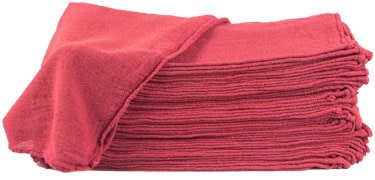
5. Dry surfaces you cleaned with disposable rags.
If you cannot let equipment air dry, it is important to dry the equipment with disposable rags because:
- The coronavirus can live longer in moist environments.
- Mold can grow in moist environments.
- Remember: Throw away rags after using them. The virus may be on them.
Still think you don’t have time for cleaning and disinfecting?
I’ll say it again—Yes, these precautions will take more time than cleaning procedures followed under normal circumstances. But these are extraordinary circumstances. These additional steps could save your life and others’ lives. The preventative steps recommended on this web page are simple—maybe not easy, but simple. But they are simply the safe, and right, things to do.

